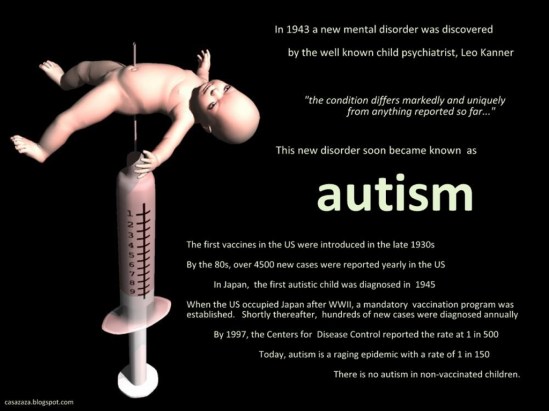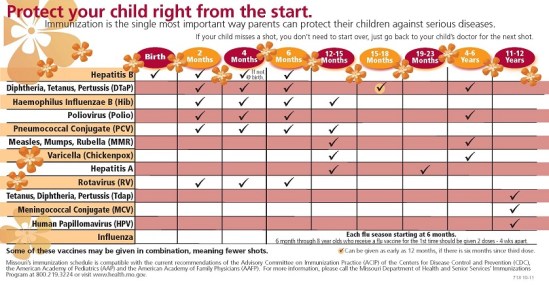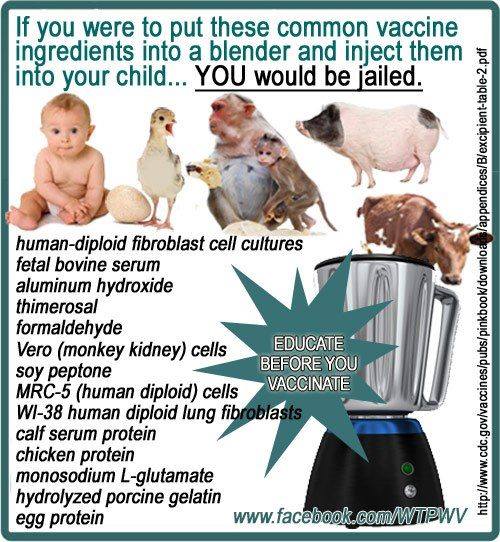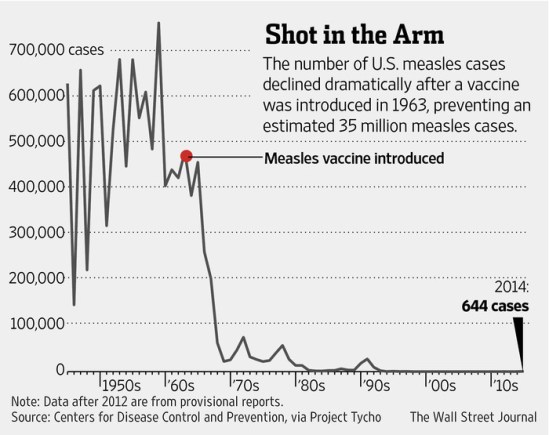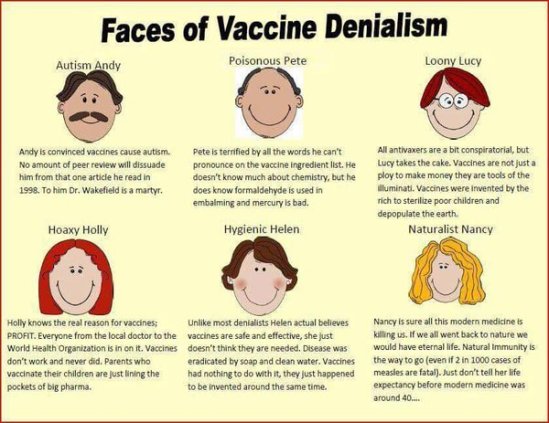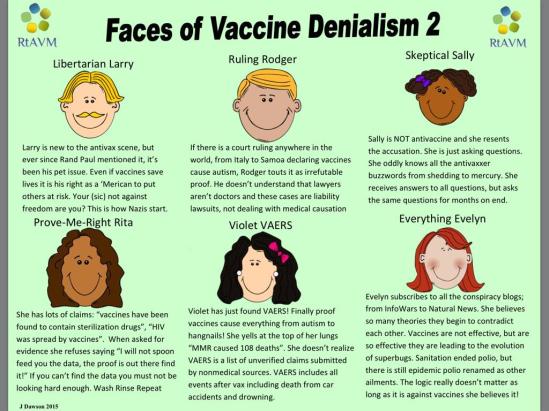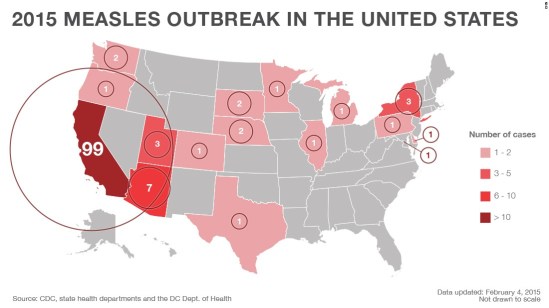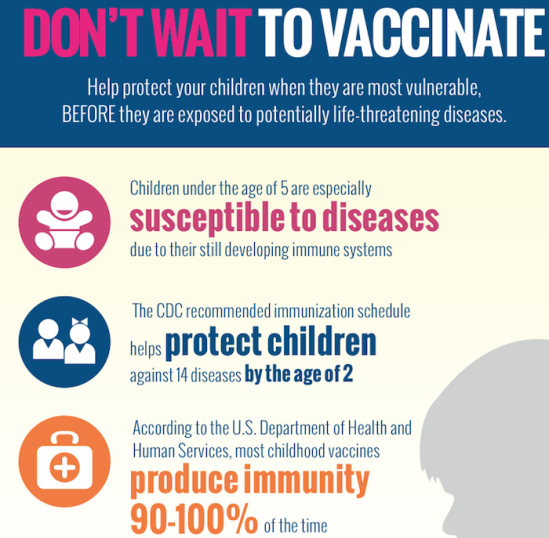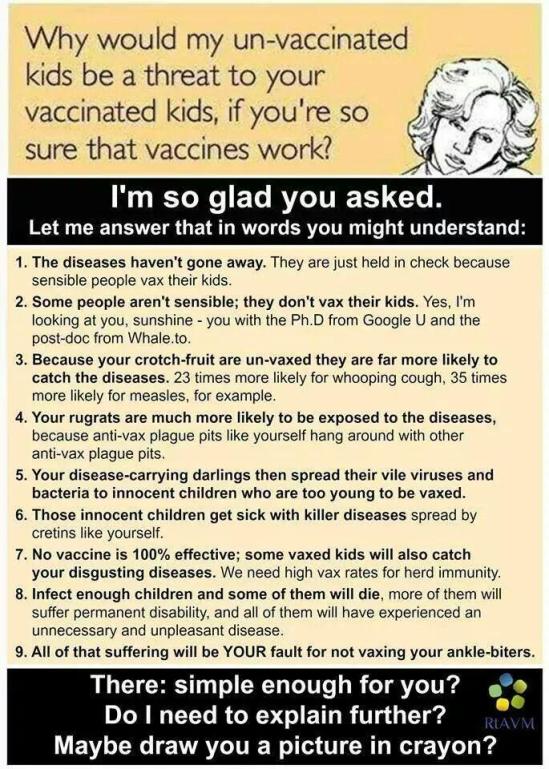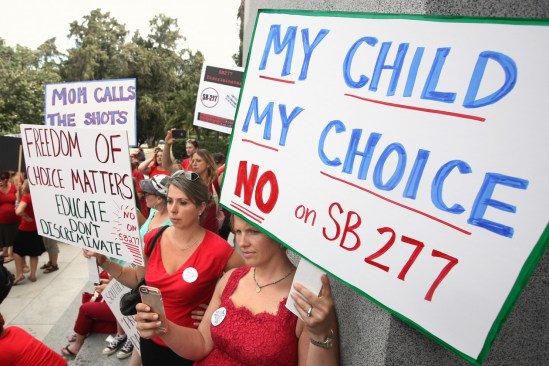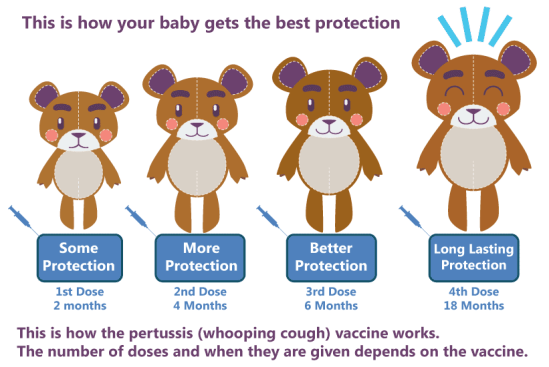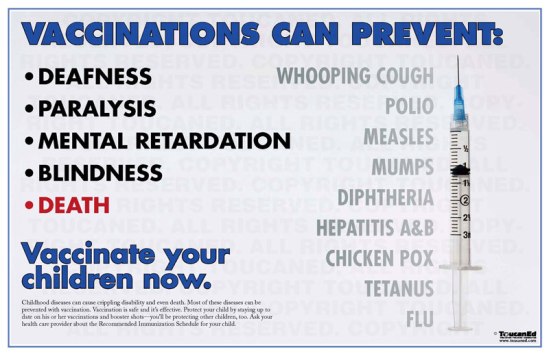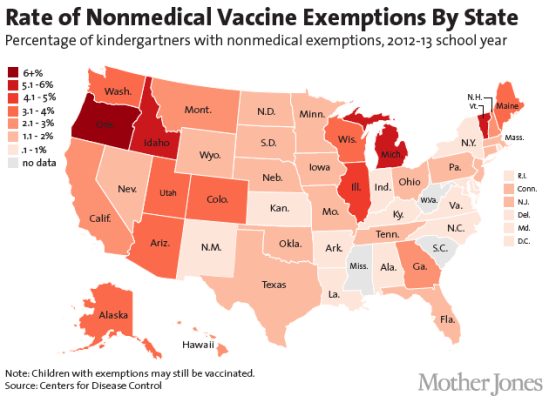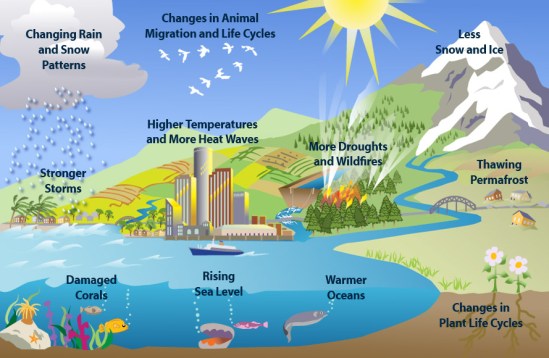
One of the biggest threats to humanity and the planet is a manmade phenomenon called climate change. For the last several decades, greenhouse gases have become trapped in the earth’s atmosphere which have led to rising temperatures, rising sea levels, extreme weather, melting ice sheets and glaciers, and ocean acidification. And in many ways the effects of climate changes can be catastrophic not just for the environment but for people as well. The threat of climate change may seem like a new thing to many. However, as with a lot of scientific notions, scientists have been discussing the idea for decades. In fact, on Youtube there’s a documentary called The Unchained Goddess which was produced by Frank Capra who ironically was a Republican. Nevertheless, over the years climate scientists have come to a consensus on climate change as real, as happening, as manmade, and as a problem. However, there are still skeptics among the masses who not only believe climate change doesn’t exist, but use resources in order to stop climate change policy from becoming a reality. Unfortunately, these people are the Koch Brothers, industrialists, energy companies, and other major polluters who contribute millions of dollars to Republican party candidates who just happen to control the House and the Senate. Well, as far as the US goes. Still, if my US Congressman doesn’t see climate change as real, happening, and a problem, then I have a problem with that regardless of party affiliation. Here I present to you some of the most pervasive myths about climate change as well as the truths they mask.

While not all Republicans deny climate change, climate deniers make the majority of Republican congressmen who now control the House and the Senate. And a lot of them have received campaign contributions from dirty energy companies. So yes, climate change denial pays big time. And that’s a problem.
- Climate change isn’t real – Sure the science may not be perfect but 97% climate scientists agree that climate change is real, it’s happening, it’s manmade, and it’s a problem. Also, it’s caused by greenhouse gases getting into the atmosphere and disrupting the climate. Effects may vary according to geography though because scientific research tends to show conflicting reports. But the debate over the existence of climate change is practically sound as far as the scientific consensus is concerned.

Here is a graph of the global temperature averages from the 1880s to the 2000s. While many skeptics believe that the presence of cold weather disproves global warming, it doesn’t. Because climate scientists tend to look at weather trends. And as far as this graph’s concerned, it’s getting warmer.
2. The earth can’t get hotter because it’s cold outside– Uh, sorry, but yes it can since there’s a difference between short-term weather variability and long-term climate change. Weather is day-to-day variations of precipitation, clouds, and temperature. Climate is the average weather pattern that takes place over many years. So if you want to find out whether climate change is real, you shouldn’t try to rely on a 5-10 weather forecast. Rather it be better to study a 30-year timeframe instead. And according to the National Climate Assessment: “While there is a clear long-term global warming trend, some years do not show a temperature increase relative to the previous year, and some years show greater changes than others. These year-to-year fluctuations in temperature are due to natural processes, such as the effects of El Niños, La Niñas, and volcanic eruptions.” So even as the climate warms, there will still be cold days and snowstorms. In fact, there are some scientists who think that the melting of Arctic sea ice might be causing bigger swings in the jet stream that can encourage frigid air to move south during the winter into the US and Europe.

While climate has changed before in the past due to natural causes, scientists have found that the global temperature increase has been consistent with the rise of CO2 in the atmosphere. This proves that climate change as we know it is manmade. By the way, this chart is from NASA.
3. The climate has changed before, so this change must be normal, too– Just because the earth’s climate has changed before in the past, doesn’t mean it’s normal or even caused by natural factors. As with climate change, the fact that atmospheric CO2 concentrations are now the highest they’ve ever been in all of human history shows us that it’s mostly manmade. Over the years, the global temperature has increased 1.5 degrees Fahrenheit, which may not seem like much. But even a small increase can cause significant changes. And the majority of warming at a global scale over the last 50 years can only be explained by the effects of human influences like fossil fuel burning emissions and deforestation. Natural factors have played a relatively minor role.

As the study of climate change has been conducted over the years, more and more climate scientists are now convinced that it exists, it’s caused by man, and it’s a problem. As far as the scientific community is concerned, the case is closed.
4. Most scientists don’t agree about climate change– 97% of all climate scientists believe that human activity is contributing to climate change. And as far as climate science goes, these are the only group of scientists who matter here.

A popular climate change myth is blaming global warming on the sun. However, while global temperatures continue to rise, solar activity has declined. So how could that be possible?
5. The sun is responsible for climate change– Yes, solar activity can cause climate swings on the earth. But recent research have conducted studies of the sun’s interaction with the climate and concluded that none of its recent behavior accounts for today’s shift. Also, the sun’s been cooling in the last 35 years.

Here is a diagram on all the possible things that climate change can cause. The fact that climate change can cause famine, plague, and wars probably illustrates why Al Gore and the IPCC received a Nobel Peace Prize. Because climate change is real threat to peace as well as security.
6. Climate change is good for us– In some cases, perhaps. But overall, no, since climate change is known to cause flooding and drought, especially if emissions aren’t reduced and temperatures increase at a rapid pace. Besides, recent reports find that climate change could cost the US economy hundreds of billions of dollars within the next few decades. Not to mention, the rise of diseases, loss of habitats, desertification, wildfires, water shortages, and catastrophic weather. However, when it comes to climate change, the US will be more fortunate than a lot of nations. Third World countries and island nations will have it the worst. Third World countries will suffer since many of them have endangered wildlife as well as relative instability and poverty. Island nations especially since climate change might threaten their very existence if sea levels continue to rise.

While plants do need CO2, this doesn’t mean they won’t be immune to the effects of climate change. Because too much CO2 could hurt plants and make them prone to infestations and disease. Not to mention, there’s desertification, ocean acidification, and chaotic weather patterns.
7. CO2 can’t be dangerous, because plants need it– Yes, plants need CO2 to grow. But just because every living thing needs water to live doesn’t mean you can’t drown in it. Research shows that plants might actually suffer with too much CO2 in the air which might lead to less nutritious crops. Because in some ways, if CO2 concentration is too high, there could be a reduction of photosynthesis. There’s also evidence from the past of sudden rises of CO2 incurring major damage on a wide variety of plant species. And plants raised with enhanced CO2 supplies and strictly isolated from insects are much more vulnerable to infestation and disease than in their natural settings. Then there’s desertification which we all know isn’t very good for plants either. More CO2 might have a positive impacts on agriculture but only in the short term. And in all likelihood, adding more CO2 will just shrink a range available to plants while expanding deserts. More CO2 will increase requirements for water and soil fertility as well as plant damage from insects. This might be good news for Monsanto but surely not for us. Also, CO2 is linked to the greenhouse effect as well as causes acidification in the oceans. Climate change has even led to a lot of unpredictable weather in a lot of places which might disrupt crop and plant cycles. Sometimes it might lead plants growing and blossoming earlier than usual. Sometimes it might lead to plants suffering an early death. Such events could happen within short time spans which isn’t good for farmers. So yes, CO2 essential but it can be seen as a pollutant if there’s too much of it in the atmosphere from manmade sources. Nevertheless, that being said, there are scientists who do say that forests do help buffer climate change effects which demonstrates why deforestation is so destructive.

Recent studies have found a correlation between the polar vortex and melting sea ice as well as temperature increases in the Arctic. Such links are being debated among scientists. However, the nature of the polar vortex in many ways shows how unpredictable the effects of global warming can be. And sometimes they’re not always what we’d expect. So to say that global warming is a hoax because it’s snowing outside in your neck of the woods doesn’t hold up. Because climate change simply doesn’t work that way.
8. Climate change has stopped and the earth has begun to cool– Listen, just because your neck of the woods has experienced abnormally chilly weather and big blizzards, doesn’t mean that global warming isn’t happening. Seriously, your local weather conditions have absolutely no bearing on global weather patterns. Nor does it indicate that climate change has stopped. Besides, the existence of climate change depends on long term trends measured over a decade or more, and according to those, the earth is warming. The last decade was said to be the hottest on record while temperature records continue shattering the previous ones each year. Then there’s the polar vortex in which very cold air which gets pushed into the temperate zones causing frigid winter temperatures as well as snowfall. This phenomenon has been known to scientists for decades. Recent studies have found a correlation between a weak polar vortex and outbreaks of severe cold in the Northern Hemisphere, which might be related to the melting ice caps. But there’s so much uncertainty since recent observations have been short term. Nevertheless, even though we live in a warming world, that doesn’t mean we can’t experience very cold weather. Because despite how climate change denialists tend to use severe winters in their neck of the woods to disprove it, climate change simply doesn’t work that way.

While there have been reports of Antarctica gaining ice, the general consensus states that it has been losing land ice since the 1990s. This isn’t good news for penguins.
9. Antarctica is gaining ice– There’s a difference between land and sea ice. As for sea ice, well, that’s influenced by year-to-year changes in wind directions and ocean currents. So it’s difficult to identify a clear trend. However, satellite images show that Antarctica is losing land ice at an accelerating rate which has implications in rising sea levels. And in Antarctica, it’s land ice measurements that’ matter more and since Antarctica has lost around 135o giga-tons of land ice into the oceans between 1992-2011 at 70 giga-tons per year. Of course, loss of ice mass varies among the land ice sheets with the West and Penninsula ones losing at an increasing rate. Meanwhile the East Antarctic ice sheet is slightly gaining but not enough to offset the other losses. Yet, most of the research suggests that Antarctica is land ice as a whole and these losses are accelerating quickly. Seriously, as someone who’s seen nature documentaries, climate change has been brought up in almost every one I’ve seen about penguins, especially when it pertains to Antarctica. Even the Morgan Freeman narrated documentary March of the Penguins discusses this since the Emperor Penguins depend on that ice to live on and are risk because it’s melting at accelerating rates. And from how I see it, none of them gave me the impression that Antarctica was gaining ice. Quite the contrary.

Here is the graph projecting the rise in sea levels. The red shows projections and predictions from 1970. The blue shows satellite observations. Not too shabby for climate model isn’t it?
10. Climate models and temperature records are unreliable– For one, scientists use models all the time in their research. Second, models have successfully reproduced global temperatures since 1900 by land, in the air, and in the oceans. Yes, there is some uncertainty when it comes to some aspects of climate science such as effects on clouds. However, certain predictions based on physics and chemistry are so fundamental like the greenhouse effect that the resulting predictions like rising temperatures, melting ice, and rising sea levels are robust no matter what the assumptions are. Also, the both rural and urban temperatures were measured by thermometers and satellites.

These are polar bears. Polar bears have evolved for a life on sea ice for reaching their seal prey. But because of climate change, sea ice is rapidly diminishing. To polar bears sea ice loss means reduced access to food. And it’s because of global warming that they’re in danger of going extinct. So how do you expect these creatures to adapt to climate change?
11. Animals and plants can adapt to climate change– It depends on the kinds of animals and plants and whether they can adapt to a changing climate on short time scales. Global warming will likely cause mass extinction of an estimated 18% and 35% of plant and animal species according to a team from the UK. Mass extinctions have been strongly linked to global climate change which can be so rapid that adaptation is simply not possible in most cases. Because it’s so pervasive and occurring too rapidly.

One of the most insidious effects of global warming is ocean acidification. As we speak the rise of CO2 emissions is changing the chemistry of the oceans as we speak, threatening the existence of entire marine ecosystems and food chains. Not to mention, the millions of people who rely on such an ecosystem for food and income. Even a small change in the pH can mean a catastrophe.
12. Ocean acidification isn’t serious– For the love of God, ocean acidification is linked to CO2 emissions since these waters absorb between 25-50% of them which does prevent atmospheric buildup from becoming much, much worse. However, CO2 emissions also cause ocean acidification. Ocean life can be sensitive to slight changes in pH levels even in an alkaline environment. Ocean acidity has increased by 30% in the last 200 years and the rate is projected to accelerate even further through the end of the century with potentially catastrophic impacts on marine ecosystems. As surface waters become more acidic, it becomes more difficult for marine life like corals and shellfish to form the hard shells necessary for their survival and coral reefs to provide a home to more than 25% of all oceanic species. Even the tiny pteropods are seriously impacted and they’re at the base of most oceanic food chains. Degradation of these species at the foundation of the marine ecosystem could lead to collapse of these environments with devastating implications to millions of people in the human populations that rely on them. Also, if atmospheric CO2 levels were to reach 550 parts per million along its current rapid ascent from its pre-industrial level of 250 ppm, coral reefs around the globe could be dissolving. So yes, ocean acidification is a very serious problem.

Between 1965-1979, 62% of all climate studies predicted a warming planet. Only 10% predicted an ice age.
13. Reports from the 1970s predicted an Ice Age– Out of the 68 climate scientific studies literature between 1965-1979, only 10% did. However, 62% of these predicted a warming planet though, which is a vast majority. Besides, there’s more worry about global warming impacts within the next 100 years, not an ice age in over 10,000 years. Keep in mind that this is the same period in which Al Gore learned about global warming.

This is Sandy and no, she’s not on her way for a friendly visit. She’s a major hurricane that wreaked mass destruction on the East Coast. While the science isn’t settled whether climate change makes hurricanes more frequent, it is established that it makes hurricanes stronger and more severe. So if you live on the coast or in Florida, expect more hurricanes like Sandy.
14. Hurricanes aren’t linked to global warming– There is increasing evidence that hurricanes have been getting stronger and more severe due to global warming. Recent research has shown that we’re experiencing more storms with higher wind speeds, and these storms are more destructive, last longer, and make landfall more often. Such phenomenon is linked to increasing sea surface temperatures which reasonably suggests that storm intensity and climate change are linked. While global warming might not mean more frequent hurricanes (since the science isn’t settled on that one), it might mean more with a Category 3 or higher.

This is a chart from NOAA explaining some of the extreme weather events in the US from 2011-2012. As you see, it’s not a pretty picture. Well, you can thank climate change for some of that since it tends to amplify the risk factors that trigger such events.
15. Extreme weather isn’t caused by global warming– Global warming amplifies the risk factors for extreme weather events which don’t automatically generate them but change the odds. So yes, climate change does increase the odds of extreme weather. Rising temperatures can have several effects involved in weather like increased evapotranspiration, a warmer atmosphere holding more water vapor, and changes in sea surface temperature. Increased evapotranspiration can have a direct effect on the frequency and intensity of droughts. The fact our atmosphere holds 4% more water vapor than it did 40 years ago increases the risks of extreme rainfall. And changes in sea surface temperatures can bring about associated shifts in atmospheric circulation and precipitation. This has been implicated in some droughts, particularly in the tropics. Hell, look at the US. Heavy rainfall and precipitation has increased in frequency and intensity by 20% in the country with the Midwest and Northeast seeing the greatest increases. In the Midwest and Great Plains expect more severe tornadoes and flooding. The frequency of drought has increased in the Southeast and the West which led to a lot of wildfires in wooded areas. And if you live in the Southeast, remember that Atlantic hurricanes have increased in both power and severity.

While some alleged that the lack of Galactic Cosmic Rays leads to global warming, most scientific research has found that the number of GCRs has increased. Thus, there is no correlation.
16. Rising global temperatures have been caused by the presence of fewer galactic cosmic rays (GCR)s– This is pure bullshit at its finest. However, GCR counts have actually increased over the past 50 years so if they did influence global temperatures, they’d have a cooling effect. However, since the earth’s temperature continues to rise, their effect is minimal at best.

These are a pictures of Muir Glacier in Alaska. One is from 1941. The other from 2004. Guess what happened during these years.
17. Glaciers are growing– No they aren’t. According to long term trends, 90% of glaciers have been shrinking worldwide. These changes have been influenced by air temperature changes as well as precipitation. And while some might be growing, glaciers tend to be dependent on localized conditions. Nevertheless, if the glaciers were growing at this time, then the polar bears wouldn’t be having such a hard time surviving in their natural habitat, would they?

Over the last 30 years, the Arctic ice has been melting at an accelerated rate. And it makes the ice less likely to survive the next year. This spells bad news for polar bears.
18. Arctic icemelt is a natural cycle– Sure Arctic has a natural cycle of freeze and thaw. However, Arctic ice is known as the “canary in the global warming coal mine” for a reason. Because satellite measurements of Arctic sea ice extent reveal a rapid decline over the last 30 years, especially at the end of each melting season. This means that the ice is melting more than accumulating, making it less likely to survive the next year as well as exposing more open water. This isn’t good news for polar bears since their reliance on the Arctic ice puts them in danger of extinction.

While burning fossil fuels only contributes to a small amount of CO2 emissions into the atmosphere, the land, vegetation, and ocean can only absorb 40% of it. Thus, that remaining CO2 is trapped in the earth’s atmosphere and warming the planet.
19. Human CO2 is a tiny percentage of CO2 emissions– Yes, the natural cycle adds and removes CO2 to keep a balance. However, humans add extra CO2 without removing any. Sure humans don’t contribute a huge percentage of CO2 and other greenhouse gases into the atmosphere but it adds up because the land and ocean can’t absorb all the extra CO2 which upsets the balance of the carbon cycle. And only 40% of this CO2 is actually absorbed with the rest remaining in the atmosphere. Human produced CO2 has increased by a third since pre-industrial times, creating an artificial forcing of global temperatures which is warming the planet. So even in trace amounts, CO2 can still be a dangerous pollutant.

Here’s an NYU survey of economists with climate expertise when asked under the circumstances the USA has to reduce emissions. Despite that we have a Republican Congress with a lot of climate deniers, most of them think we should do something regardless of what other countries are doing.
20. CO2 limits will harm the economy– If climate change proceeds without any efforts to reduce it, we can expect to incur serious economic costs. And it’s not unreasonable to expect that the effects of climate change will cause greater economic instability worldwide. The solution is to reduce fossil fuel use either through renewable energy resources or increased energy efficiency. There’s a consensus that believes putting a price on carbon through taxes and cap and trade policies are essential to limiting carbon pollution in order to prevent climate change from damaging the local economy. A number of such incentives are being tried to varying degrees of success. Nevertheless, if we want to reduce carbon emissions and avoid draconian government intervention, carbon pricing schemes seem like a viable way to reduce fossil fuel use (if not transition us away from fossil fuels altogether) as well as help transform an outdated system into one fitting for a sustainable century. Thus, the benefits outweigh the costs several times over.

While the poor contribute the least to climate change, this map reveals that they will be the most impacted by climate change. If there is a reason why Pope Francis is speaking about climate change now, this is it.
21. CO2 limits will hurt the poor– The only people who will be hurt by CO2 limits are those who’ve gotten rich in the fossil fuel industry. Nevertheless, the idea that fossil fuel and other industries create good jobs is a myth. After all, while US miners and oil and gas workers might make good money, that’s mostly due to the fact that their ancestors took to the streets to fight for their God given rights through unionization, regulations, and reforms which wasn’t at all easy. Because in the 19th century, fossil fuel industry jobs didn’t lift people out of poverty. Not only that, but a lot coal miners started their jobs as children. And yes, I’m aware that polluting industries are said to give jobs to people who don’t have a college education. And even if fossil fuel workers do make good money, they’re still being screwed in the process. But if these companies had their way, industrial workers would be paid less than Wal Mart employees as well as have to deal with a shitload of workplace safety hazards. Nobody wants that. Still, when it comes to CO2 limits, the poor won’t have to worry that much since they contribute the least greenhouse gases. However, those in poverty will be most impacted by climate change as well as the least able to adapt. This is why I said that Third World countries will suffer the some of the worst effects of global warming, especially if they’re island nations.

Due to climate change and ocean acidification, coral reefs are becoming increasingly under threat by coral bleaching. Bleached coral has no algae and becomes vulnerable to disease and has no major source of food. Coral bleaching is very serious threat to reefs as well as marine ecosystems everywhere.
22. Corals are resilient to bleaching– Because of global warming and ocean acidification, coral reefs are in decline on a world scale. Over the last 30-40 years, 80% of coral in the Caribbean have been destroyed as well as 50% in Indonesia and the Pacific. Bleaching associated with the 1982-1983 El Nino killed over 95% of coral in the Galapagos Islands and the 1997-1998 El Nino wiped out 16% of all coral on the planet. Globally about 1% of coral dies out each year. This is terrible because over half billion people depend on coral reefs for a living and sustenance. And ecologically, coral reefs are integral to the oceans’ well-being since they’re like the tropical rain forests of a sea that’s virtually a marine desert. Not to mention, they provide a home for over 25% of fish in the ocean as well as up to 2 million marine species. So if the coral goes, all that disappears. And that’s really bad.

While fossil fuels may have a cheap market price, they also carry high external costs like health problems, pollution, loss of biodiversity, climate change, decreased property values, infrastructure damage, and potential for disasters. Seriously, when an offshore platform exploded in the Gulf of Mexico, the region was devastated. Let’s just say while renewable energy might be expensive in the short run, at least you don’t get disasters like the Gulf Oil Spill.
23. Renewable Energy is too expensive– I hear this a lot, too. But while the market price on fossil fuels is cheap compared to renewable energy, there are effects that aren’t reflected. These consist of air pollution and health impact as well as possibly workers’ health and safety and potential for disaster. If you take pride in West Virginia industry, then perhaps you shouldn’t get attached to your Blue Ridge Mountains and Shenandoah River because of mountaintop removal and excessive water pollution. If you live in some places in rural Pennsylvania, then don’t expect a lot of royalties from leasing your land to the Marcellus Shale gas companies which will cost you your well water quality and property values. Oh, and if that nearby well or pipeline explodes, then consider relocating to rebuild your life because your home is now engulfed in flames. And if you’re fine with an offshore oil platform in the Gulf of Mexico, well, if it experiences a major accident, then Bubba Gump Shrimp is out of business. And I’m sure the tourists won’t be coming back to the beach due to not wanting to take a dip in oil sludge. Still, why buy oil from the station when you can get it all for free? Just go down to the shore line where the water used to be. And I didn’t even get to the effects of climate change. Now do people experience such problems with renewable energy? No, because you don’t need to remove mountain tops for solar power or frack for wind energy. That being said, the true cost of fossil fuels is much higher than the cost of most renewable energy technologies with the possible exception of nuclear power.
24. CO2 limits will make little difference– Well, if it’s only confined to a single country, then its CO2 emissions reduction will make little difference. However, if every nation agrees to limit CO2 emissions, we can achieve significant cuts on a global scale, especially if it pertains to nations like the US and China. Basically as far as the science goes, we all either take measures to reduce CO2 emissions together or we’re doomed. However, if you want the US to get on board with fighting climate change, then you must find a way to bankrupt the Koch Brothers and their allies because they’re the reason why so many Republicans deny climate change in the first place.

This chart shows many ways we can combat climate change. And as of 2016, we have much of the technology available.
25. We don’t have the technology necessary to fix global warming– Scientific studies have determined that current technology is sufficient to reduce greenhouse gas emissions enough to avoid dangerous climate change. Among these are renewed fuel economy, reduced reliance on cars, more efficient buildings, improved power plant efficiency, storage of carbon captured in power plants, storage of carbon captured in hydrogen plants, storage of carbon captured in synthetic fuels plants, wind power, solar photovoltaic power, renewable hydrogen, biofuels, forest management, and agricultural soils management. Nuclear power and substituting coal for natural gas are also listed but I didn’t include them because nuclear power isn’t safe, especially in a disaster and natural gas involves hydrofracking and is pretty much a Diet Coke option as a fossil fuel to begin with (meaning while it’s not as bad as coal or oil, it’s still a fossil fuel that pollutes and gives of CO2 emissions. And then there’s fracking and explosions to worry about. Seriously, I wouldn’t recommend this). Sure reducing greenhouse gas emissions may be difficult but it’s possible. However, if the US wants to go forward with reducing CO2 emissions, then I think Republicans must stop denying climate change as well as stop relying on the Koch Brothers as well as the energy and industrial companies for campaign cash when they’re up for election.
26. Climate is chaotic and can’t be predicted– As we all know, weather can be rather chaotic as you see on the news with the weather report. Seriously, you probably know your local weatherman has gotten the forecast wrong at least once. However, climate doesn’t work this way since it’s driven by the earth’s energy imbalance, which is more predictable. Also, long term trends. Thus, the chaotic nature of turbulence is no real obstacle for climate modeling.

This is a diagram on how a solar cell can store baseload power. So apparently, the climate skeptics were wrong. Don’t you think?
27. Renewable energy can’t provide baseload power– A popular myth is that some types of renewable energy don’t provide baseload power and require an equivalent of backup power provided by fossil fuels. However, this is bullshit. Still, while renewable energy doesn’t necessarily need to provide baseload power in the short-term, there are several ways in which it can do so if need be. Geothermal energy is available at all times. Concentrated solar thermal energy has storage capability. Wind energy can be stored in compressed air. Then there’s hydroelectric power is cheap, clean, as well as good for baseload and meeting peak demand despite being limited by available natural sources.
28. CO2 limits won’t cool the planet– Maybe not. However, continued greenhouse gas emissions at or above current rates would cause further warming and induce many changes in the global climate system during the 21st century that would very likely be larger than those observed during the 20th century. If we decrease CO2 emissions, temperatures will still be warm but then stabilize. So while CO2 limits won’t cool the planet, they won’t make things worse.

Those who keep tropical fish know that they have to keep their aquariums set to particular conditions. Any slight changes in temperature could be detrimental to fish and put the water chemistry out of whack. It kind of operates on the same principles when it comes to how global warming causes ocean acidification. And yes, as tropical fish owners know, a change of a few degrees does make a big difference.
29. Well, temperatures are increasing only a few degrees– Yes, but an increase of a few degrees has a huge impact on ice sheets, sea levels, and other aspects of climate. While nature can be quite resilient at times, in other ways, it’s a very fragile thing. Think of how tropical fish owners have to keep their aquariums at a certain temperature range at all times since water temperature in the natural world determines which organisms will thrive or die. A small increase in a tank’s temperature could change the water in so many significant ways as well as put added stress on the fish or possibly kill them. In fact, you stuff like this going on in the oceans as I speak as average global temperatures in these bodies of water have increased by about 1.3 degrees Fahrenheit over the last century.

No, I don’t think building an ark is a great way for adapting to climate change. Economists say that while preventing global warming is relatively cheap, they can’t even estimate the accelerating costs of climate change if we do nothing.
30. Adapting to global warming is cheaper than preventing it– Just say that when many of your major cities are under water. Or if you live in an island nation, your whole country. But as they say, an ounce of prevention is worth a pound of cure. And nothing emphasizes this more than the struggle against climate change. According to scientists, while preventing global warming is relatively cheap, economists can’t even accurately estimate the accelerating costs of climate change if we continue with business as usual.

While many contrarians tend to argue that global warming doesn’t exist due to record snow on the ground, these people have no idea how climate change works. In fact, many scientists point out that climate change increases evaporation which means more precipitation. And this is consistent with record snowfall in cold weather.
31. Record snowfall disproves global warming– Sorry, but global warming doesn’t work that way. Claiming that record snowfall is inconsistent with global warming betrays a lack of understanding of the link between climate change and extreme precipitation. Warming causes more moisture in the air which leads to more extreme precipitation events. This includes more heavy snowstorms in regions where snowfall conditions are favorable, particularly in areas with average winter temperatures as near the freezing mark of 32 degrees Fahrenheit. Not to mention, in northern and colder regions, temperatures are often too cold for very heavy snow so warming could bring more favorable snowstorm conditions. Thus, record snowfalls are consistent with more extreme precipitation events pertaining to global warming and far from contradicting it. Not to mention, while snowstorms have declined the American lower Midwest, South, and West Coast, they’ve increased in the upper Midwest, East, and Northeast with an overall upward national trend. Besides, global temperatures within the last few months of record snowfall have been the hottest on record and it’s said that snowstorms were more common during warmer and wetter years during the 20th century.

Here is a chart of all the health effects that stem from climate change. And yes, it’s not pretty as you see.
32. Climate change isn’t urgent– Newsflash: it is and it is increasingly so. It’s not obvious because a large amount of warming is delayed. But some of the research suggests that if we want to keep the earth’s climate within the range humans have experienced, then we must leave nearly all the remaining fossil fuels in the ground. If we don’t act now, we could push the climate beyond tipping points where the situation spirals out of control.

The effects of soot on global warming are unknown. However, the reduction of black carbon has more to do with it being a key contributor to air pollution and detrimental to human health.
33. Soot is mostly to blame for global warming– Sure black carbon is a pollutant and does contribute somewhat to global warming. But soot only remains in the atmosphere for days and weeks and doesn’t accumulate like CO2. Still, black carbon’s effects as a pollutant are more apparent and pertain to air pollution that leads to serious and well documented health effects. They’re also accompanied by CO and volatile organic compounds (VOCS) which are also terrible. And yes, such compounds should be eliminated because they kill people. CO2 emissions, on the other hand cause global warming for centuries and can remain in the atmosphere for over 100 years which is why reducing CO2 emissions should be a top priority. Not to mention, CFCs have also been blamed for global warming but the reality is that they contribute only to a small amount. And their main damage had more to do with creating a hole in the ozone layer in Antarctica.
34. Ozone has been causing global warming– Multiple satellite and ground based observations have determined that the ozone layer has stopped declining since 1995 while temperature trends have continued upwards.

While methane is a more potent greenhouse gas than CO2 it only contributes to 28% of the warming CO2 does. However, this doesn’t mean that having methane in the atmosphere isn’t a problem. Because it is.
35. Methane contributes to global warming– Yes, it does and there’s no arguing with that which is why I’m no fan of Marcellus Shale drilling. And yes, methane is a more potent greenhouse gas than CO2. However, there is over 200 times more CO2 in the atmosphere. Thus, the amount of warming methane contributes only consists of 28% of what CO2 does. Nevertheless, that’s not to say that methane can be ignored because we should reduce methane levels and the trend in increasing methane has slowed down and leveled off since the 1990s. But with the natural gas drilling boom, that might change. Thus, while methane only plays a minor role, it could get much worse if the permafrost starts to melt.
36. The Infrared Iris will reduce global warming– Introduced in 2001, according to Skeptical Science: “The infrared iris hypothesis suggests that increased sea surface temperature in the tropics would result in reduced cirrus clouds and thus more infrared radiation leakage from Earth’s atmosphere. This radiation leakage in turn would have a cooling effect, dampening global warming as a negative feedback.” Since that time, subsequent studies have found little supporting evidence for it. And as far as the science goes now, that if the Infared Iris Effect exists it either has a much smaller impact at reducing global warming than originally hypothesized or possibly amplify it.

This is a political cartoon pertaining the the Climategate Scandal which involved some hacked e-mails taken way out of context. Investigations have cleared the scientists involved of wrongdoing, however. But don’t tell that to global warming deniers.
37. The Climategate CRU hacked e-mails suggest a conspiracy– In 2009 the servers at the University of East Anglia in Britain were hacked and e-mails were stolen. When a selection of these e-mails between climate scientists were published on the internet, a few suggestive quotes were seized upon by many who believed that global warming is all just a conspiracy. However, in reality, they have taken the e-mails out of context thinking that they confirmed what they’ve probably believed for years and ran with it. Several independent investigations from different countries investigated the stolen e-mails and found no evidence of wrongdoing. So in the end, those few suggestive e-mails only served as a distraction from the wealth of empirical evidence of manmade global warming.

Al Gore’s 2006 documentary An Inconvenient Truth is about as informative on climate change as it is controversial. Does Gore get stuff wrong this? Probably. However, experts have called this film broadly accurate as well as what Gore said, an inconvenient truth.
38. Al Gore’s An Inconvenient Truth got it wrong– Al Gore may be no scientist but you have to admire his advocacy on fighting climate change since he’s done a lot to publicize the issue in ways no one else has, especially when it came to his film An Inconvenient Truth. While the film may not be 100% accurate, it accurately represents the science as it stood, a fact that’s been confirmed by expert witnesses and subsequent scientific research. And it’s far more accurate than anything climate change deniers come up with.

Greenland may never have been green since its icesheet was found to be over 400,000 years old. However, today because of climate change, Greenland is now extensively losing ice.
39. Greenland used to be green– Well, according to Icelandic Vikings who discovered it 1,000 years ago, maybe. But it’s sort of established that Erik the Red named it Greenland to encourage Viking settlers to go there. So the only “green” in “Greenland” was probably in Erik the Red’s pocket. And besides, the Vikings only established 2 or 3 settlements on there anyway. Nevertheless, 80% of Greenland is covered in an ice sheet that’s about 400,000-800,000 years old. While there was a Medieval Warming Anomaly during the medieval period, the effect wasn’t global and the average temperatures were lower than today. And if there was any warming in Greenland in the Middle Ages it was caused by natural factors which are probably not responsible for today’s global warming. Today, satellite images and ground observations show that Greenland is extensively losing ice as a whole. And we should remember when Greenland was 3-5 degrees warmer a large portion of its icesheet melted.

While it’s somehow believed that negative cloud feedback could reduce climate change, most studies have ruled it out since clouds don’t provide much negative feedback at all. And it’s believed that clouds might cause the planet to warm even further.
40. Clouds can provide negative feedback that will cancel out human caused global warming– The effect of clouds in a warming world is complicated. According to one notion it’s said that low level clouds tend to cool by reflecting sunlight while high level clouds warm by trapping heat. However, a couple studies have found that cloud feedback in the tropics and subtropics have a positive feedback which could cause the planet to warm even further. So it’s unlikely that clouds could cause enough cooling to offset much of the human caused global warming.

Here I present a diagram that states that CO2 doesn’t have a big presence in the atmosphere and is therefore insignificant to climate change. However, while CO2 is a trace gas, it’s about as insignificant in the atmosphere as alcohol is your bloodstream on a Friday night when you’re driving home after having a few beers. Small amounts of very active substances can have large effects whether it pertains to climate change or your breathylzer test.
41. CO2 is only a trace gas– Yes, it may be. But small amounts of very active substances can cause large effects. For instance if your blood/alcohol level appears as 800 ppm on a breathylzer test or 0.08%, you shouldn’t go into a car with your hands on the wheel. Because that’s drunk driving which will give you a 5 year manslaughter sentence if you end up killing somebody. The amount of CO2 in the atmosphere might be small compared to other gases. However the total CO2 molecules around our heads is more important than their percentage in the atmosphere. And we know the amount of CO2 in the atmosphere has increased along with global temperatures because scientists have measured it. Nevertheless, while an increase can still be a trace, it could make a large difference and not for the better.

When studying climate change, ice core samples have been proven quite instrumental in measuring climate conditions in the past. Plant stomata data, not so much.
42. Plant stomata show higher and more variable CO2 levels– Plant stomatal data isn’t as direct or reliable as ice core measurements and hence not as precise. Several ice core data sets are essentially consistent and are direct measurements of air that have been enclosed in bubbles. This is certainly the case in the Greenland Plant stomatal data doesn’t show this or as much as proponents would like.

As sea levels rise, the existence of entire island nations are increasingly in jeopardy. This Pacific Islander is holding as sign asking the rest of the world to prepare a place where her country can stay. To some, climate change might mean losing a way of life or a home. To this girl, it means losing a country and everything with it. And to her, climate change is a bigger threat to her nation’s security than terrorism.
43. Sea levels aren’t rising– Sorry, but they are and it’s a serious problem. Because if we don’t act against climate change now, then it’s likely that a lot of our major cities would be entirely underwater. And between 1950-2009, the sea level of the island nation of Tuvalu rose 5.1 mm per year which is 3 times average global level sea level rise. The fact sea levels of rising has created quite a concern for many island nations like Fiji, Kiribati, Maldives, the Philippines, the Solomon Islands, Indonesia, Tonga, Papua New Guinea, Palau, and Vanuatu. Though sea level rise isn’t always level since the heat content isn’t spread evenly over the oceans, the general trend has been a concern for many island nations whose existence might put them in jeopardy.
44. An exponential increase in CO2 will result in a linear increase in temperature– Despite the logarithmic relationship between CO2 and surface temperatures, atmospheric CO2 levels are rising so fast that unless we dramatically decrease our emissions, global warming will accelerate over the 21st century. And as business as usual continues, we are currently at a pace to double the current CO2 concentration within the next 60 to 80 years. Thus an exponential increase will outpace its logarithmic relationship with surface temperatures causing global warming to accelerate unless we take serious steps.

Another pervasive myth that seems to live on is that investing in renewable resources will take away more jobs that it will create. Time and time again, studies have proven this false. In fact, green energy creates more without having to cause a single oil spill.
45. Renewable energy investment kills jobs– Now this is a pervasive myth about climate change that I’ve heard several hundred times during my lifetime. There’s a Spanish economist from a libertarian think tank that receives funding from Exxon Mobil (of Exxon-Valdez) who claims that every new job created for investing in renewable energy destroys 2.2 conventional jobs. However, this claim is based on a study that relies on incorrect numbers, cherrypicked dates, faulty theory, flawed methodology, and has been disproven by real world examples. In reality, renewable energy investment and development creates more jobs than fossil fuel energy. Not to mention, it results in fewer workplace health and safety risks as well as less environmental damage in disasters. Besides, while fossil fuel may be seen as cheap at first, its market price doesn’t account for various external costs. While renewable energy may be more expensive at first, extra money invested in renewable energy could be spent elsewhere to create new jobs in different sectors of the economy.

While humans have survived climate changes before, they were usually ice ages that took place before the dawn of civilization. It’s not like the climate change we’re going through now, which is mostly caused by CO2 emissions.
46. Humans have survived past climate changes– Yes, but they were mostly cold ones and mostly in our distant past like ice ages which took place before civilization. And at that time, most of those climate changes were caused by natural factors like orbital wobbles, solar fluctuations, and continental drifts. But since civilization, climate hasn’t changed much until recent years. The climate change we’re experiencing now is clearly manmade. But since our human ancestors have been on earth, average global temperatures have never been 3 degrees Celsius warmer than now. In the next 100 years, our children will be the first people to experience that kind of climate.

Here’s a map of the US during a heat wave it experienced in 2011. Seems like Texas is a real red state in this like hotter than hell. And that state’s politicians aren’t known for their climate advocacy. Quite the opposite.
47. Heatwaves have happened before– Yes, heatwaves have happened before but that doesn’t mean the extreme heatwaves we have now is natural because it’s not. Global warming is causing more frequent heatwaves as record-breaking temperatures are happening 5 times more often than they would without any human caused global warming .This means that there’s an 80% chance that any monthly heat record today is due to human caused global warming. If we continue to rely heavily on fossil fuels, extreme heatwaves will become the norm across most of the world by the late 21st century. However, if we take major steps to reduce human greenhouse gas emissions, the number of extreme heatwaves will stabilize in 2040.
48. Removing all CO2 would make little difference– According to Skeptical Science, “75% of the greenhouse effect is caused by water vapor and clouds, which rain out of the atmosphere if it cools. This makes water vapor a strong positive feedback to any change in non-condensing greenhouse gases. CO2 constitutes 80% of the non-condensing greenhouse gas forcing. Removing CO2 would remove most of the water, cancelling most of the greenhouse effect and cooling the Earth by 30 C.”

Here’s a diagram of energy inputs into the earth’s climate system. Notice that energy from the earth’s interior only makes a small segment compared to solar and human produced energy.
49. Underground temperatures control climate– Good grief. Well, according to Skeptical Science, “The flow of energy outwards from the interior of the Earth is 1/10,000th of the size of the energy flow from the Sun. Furthermore, over the past few million years, the heatflow from deep in the Earth has also remained very steady compared to other climatic factors. Heat from the bowels of the Earth does not influence climate in any significant way.” Besides, we can use geothermal energy as a renewable resource that will keep us off from fossil fuel dependency. And many of us have bathed in natural hot springs.

Things have been heating up in the frozen Arctic due to the ice melting at an alarming rate. And declining sea ice has been a critical factor in that.
50. Melting ice isn’t warming the Arctic– Uh, yes it is. It certainly is. Empirical evidence from the past two decades reveals that declining sea ice cover and thickness have been great enough to enhance Arctic warming during most of the year. Not to mention, more sunlight being absorbed through the water. And according to Skeptical Science, “Decline in sea ice is the major driver of Arctic amplification. This is evidence by the pattern of atmospheric warming over the Arctic. Maximum warming occurs over the surface during winter while less surface warming is found in summer when heat is being used to melt sea ice. This pattern is consistent with sea ice amplification.”




